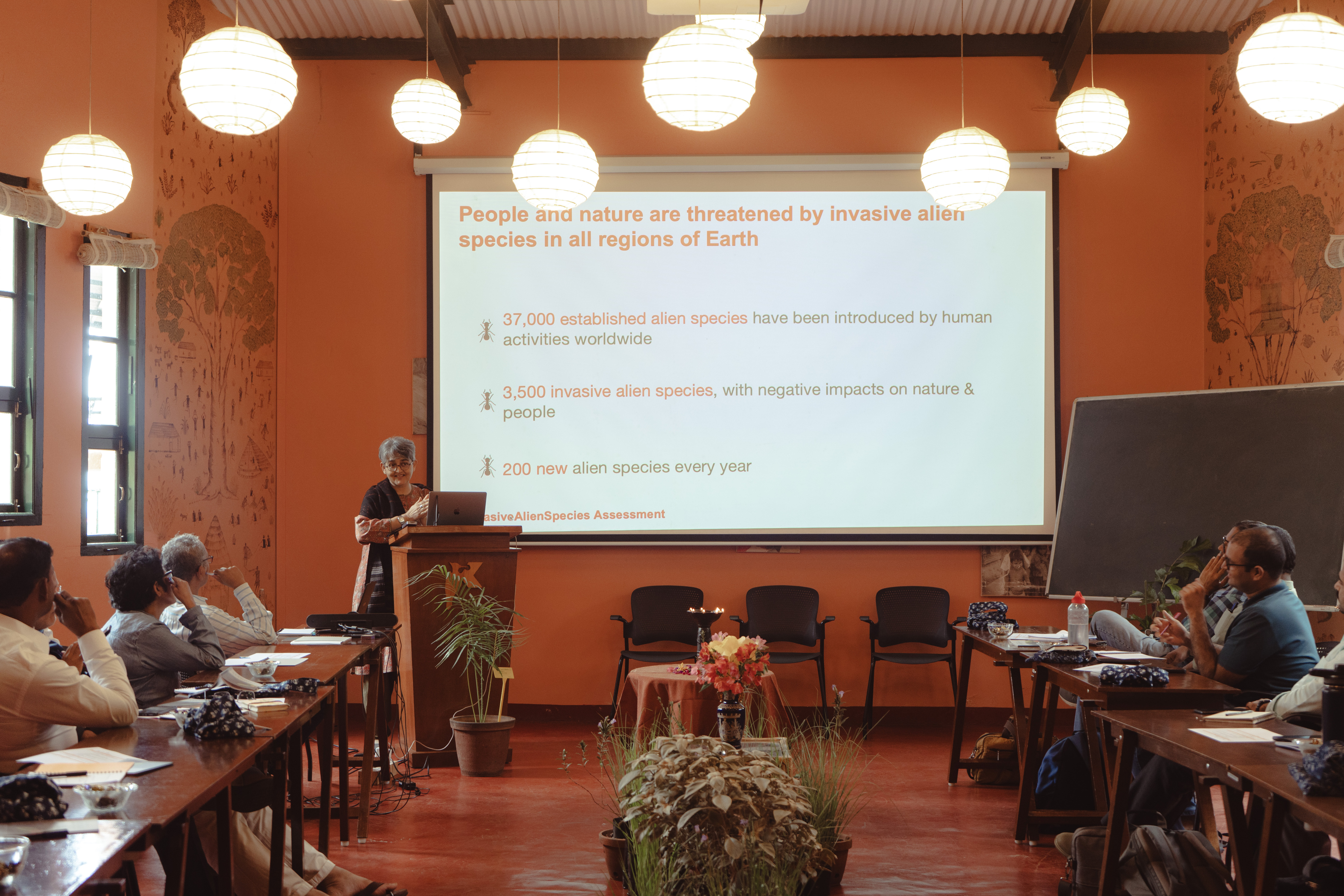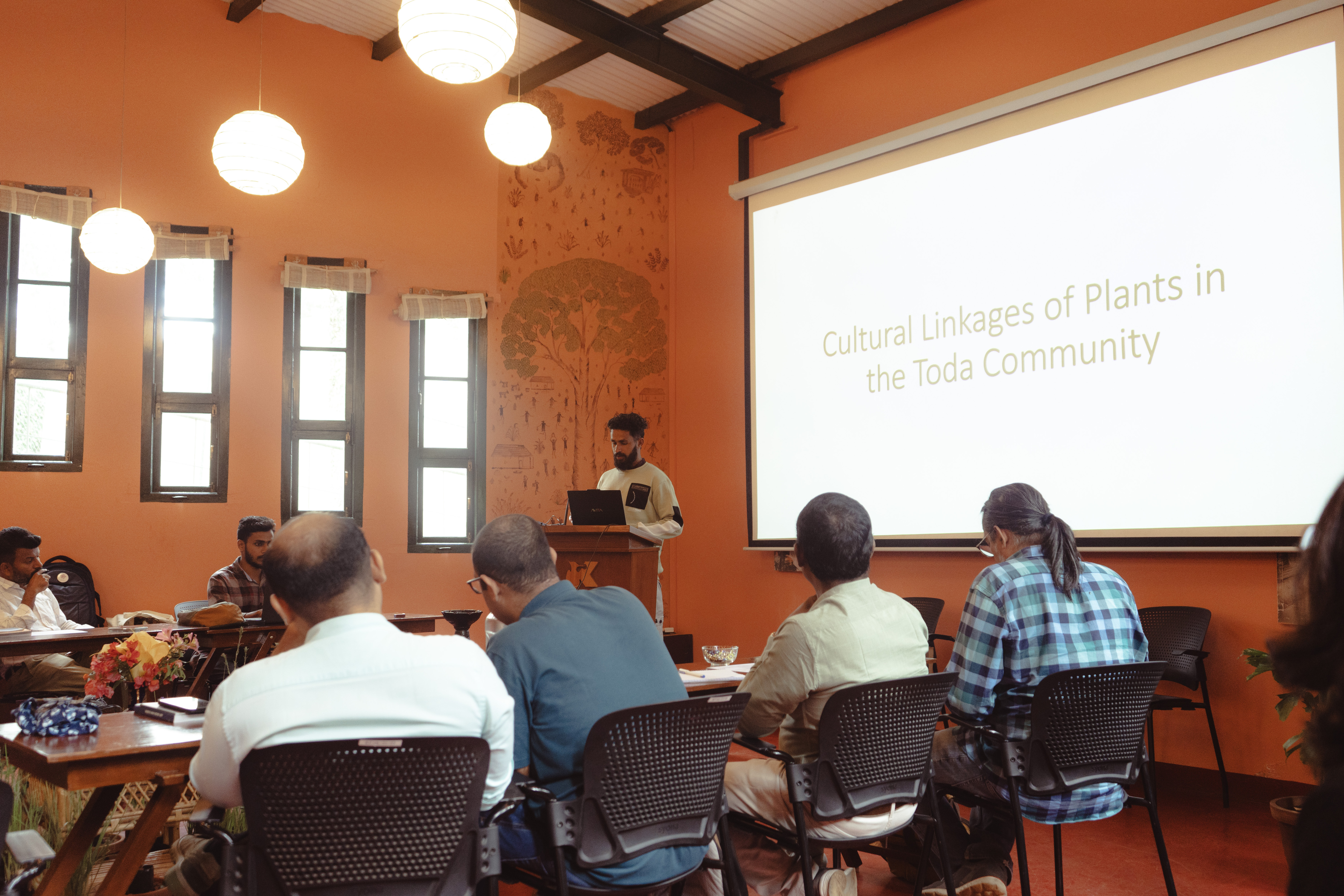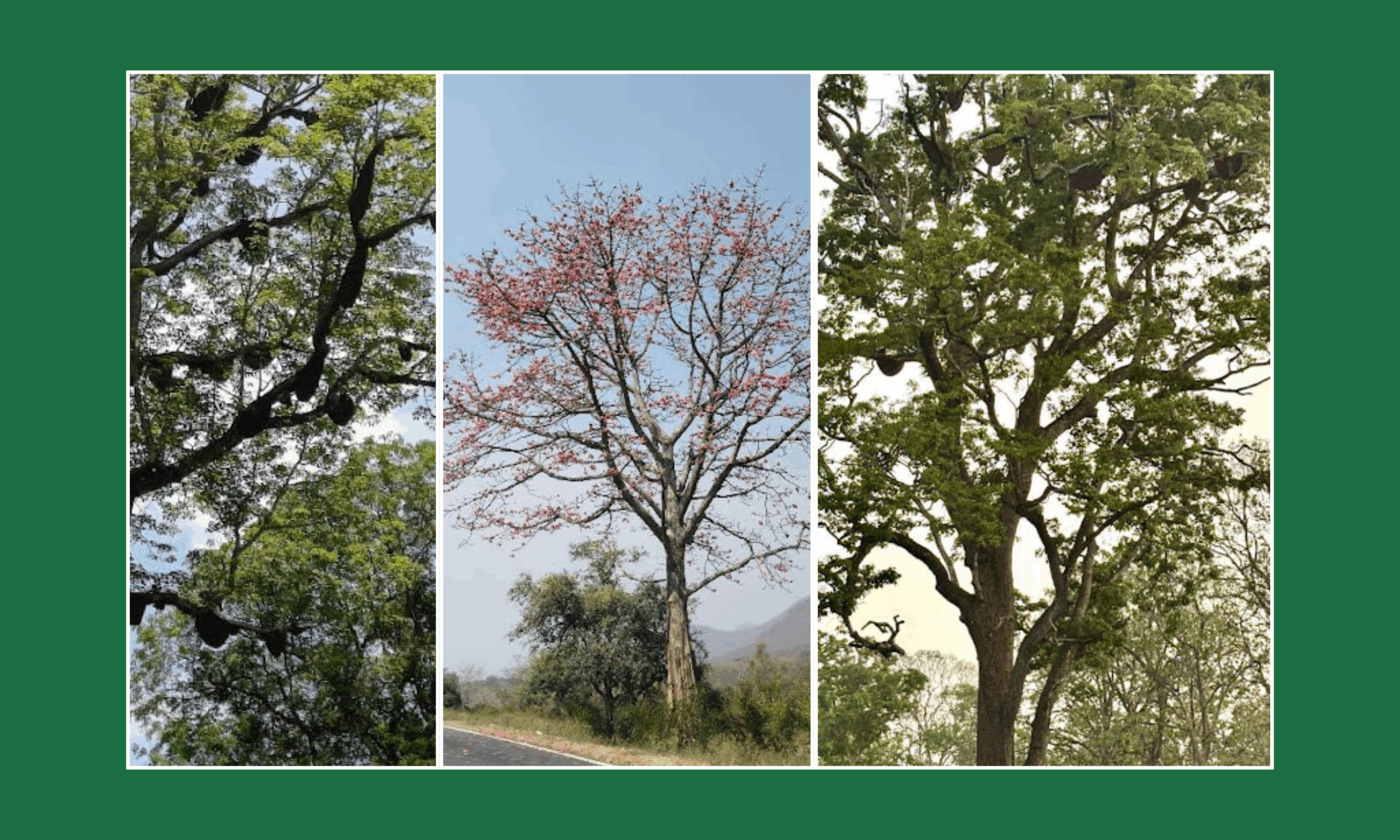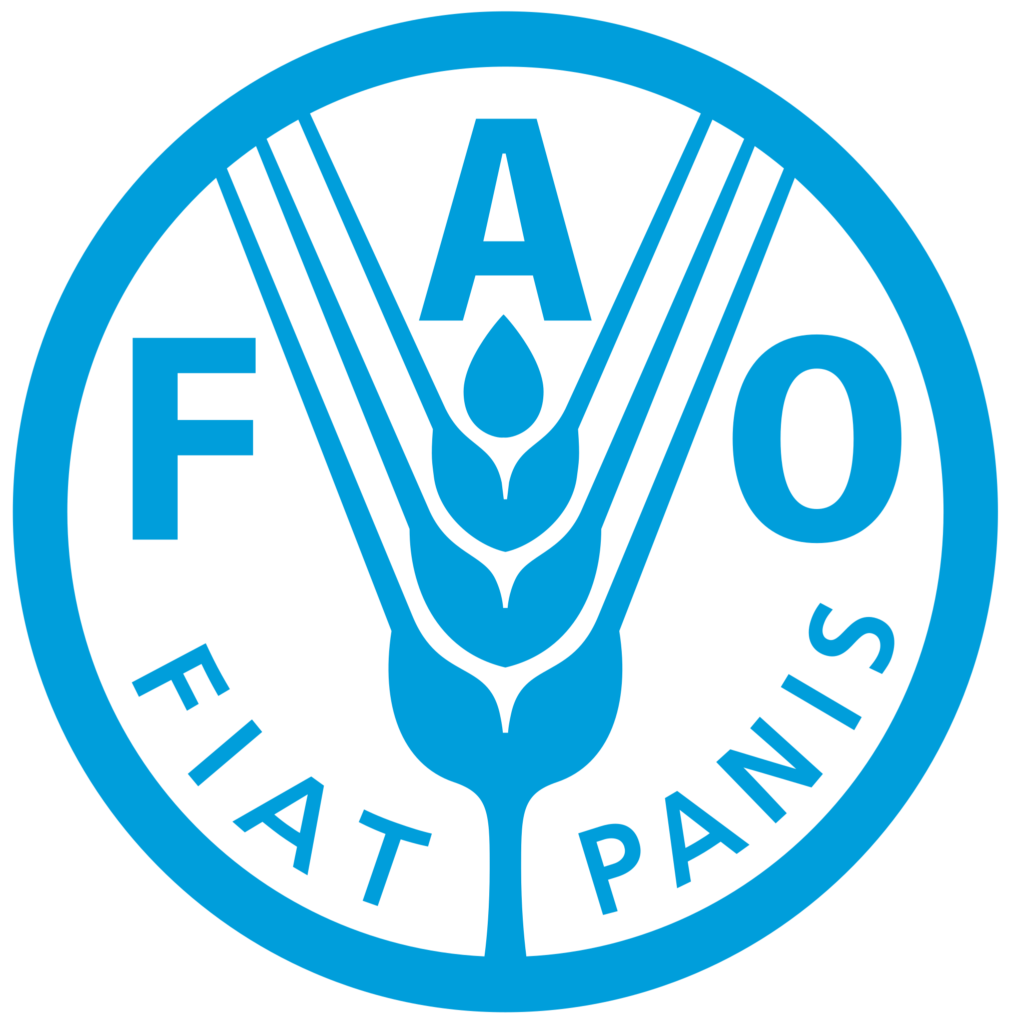By Anita Varghese & Anokha Venugopal
This month, the Western Ghats Plant Specialist Group of the IUCN SSC convened for two days of energising discussions on the present and future state of plant conservation and assessments.
The Mandarae meeting hall was adorned with native plant species from our nursery and arboretum, including neelakurinji (Strobilanthes kunthiana).
At the front of the hall stood a stone deepam, set alight by WGPSG members representing the diversity of places they hailed from, such as Goa, Maharashtra, Tamil Nadu, Sri Lanka, Karnataka, and more.
Dr. Anita Varghese, the current chair of WGPSG, welcomed the group warmly, conveying her excitement at having such an acclaimed and passionate group gathering together on Keystone’s campus and in the Nilgiris: “there are so many experts in this landscape”. A key note from her introduction was the need for trust building and ‘collaboration for conservation’ among those in the plant ecology field.
Dr. Ankila Hiremath, a plant ecologist with an interest in ecosystem restoration, led a session on Invasive Plants of India and the citizen science approaches that have been undertaken so far to document their presence and distribution on a spatio-temporal scale. Dr. Hiremath received questions from the group regarding the standardising the nomenclature and species identification; perceptions of indigenous communities about invasive species; using iNaturalist as a platform for capturing the information.

In the afternoon, Mounthees Kuttan led a subject talk on the use of plants in Toda cultural uses and their perceptions on its conservation and about knowledge transfer. Mounthees is a youth member of the Toda community and a community researcher with the People and Nature Collectives program at Keystone Foundation. The audience asked questions about indigenous nomenclature and the transfer of knowledge and interest of the youth to learn about the plants.

Following this, other members of the WGSPG joined in an online meeting, where they discussed ideas for work that could be taken up as a group. The need to include conservation assessments and planning in curriculum at undergraduate level was discussed at length. Scientists from Kerala brought about the issues of plant identification-Cycas anaikallensis-they felt it was spread across Kerala and not only present in one location. This took the group to a discussion about good practises in taxonomy and the need to re-emphasise this at teaching forums. There was an interest to host Field Botany courses that are endorsed by the WGPSG. Additionally, the idea that WGSPG should endorse ex situ and in situ conservation guidelines, especially when it comes to endemics and endangered plants, was another important point.
The final session of the day was led by Dr. Sanjay Molur on the history and process of conservation planning. He highlighted the need to follow the assess, plan and act model with emphasis on habitat conservation, as well as how to take up plant conservation activities with regard to Key Biodiversity Areas.
On Day 2, the group left early for a forest walk. The word walk is used lightly here, as the group of plant specialists stopped every few metres to examine and discuss plant structures vivaciously. Some common sights were members like Dr. Ankur Patwardhan pressing flowers into their notebooks, while others shared a pocket magnifier to look at different plants in detail.
Upon their return to Kotagiri, the group reconvened in the meeting hall to make plans for the way ahead. Some points discussed are listed below:
- Accelerating the Red Listing process with experts from different plant groups (Dr. Navendu Page)
- Providing field botany/field ecology course for college students and enthusiasts by collaborating with member’s organisations and also include as courses in colleges
- Collaborating individual work of members with WGPSG (Dr. R. Ganesan)
- Working on official website for WGPSG and combining that with IUCN engage
- Providing state-wise and country-wise list for species of concern to respective state forest department to increase their count in forest department nursery (Dr. Ankur Patwardhan)
- Come up with a protocol for ex-situ conservation discussing with the members
- Work on declaring plant-centric KBAs
- Newsletter to circulate among members
- Populating about a species one is working on in online platforms like Wikipedia (Drs. Shiny and Divya)
- Come up with a comprehensive list of plants of Western Ghats


















